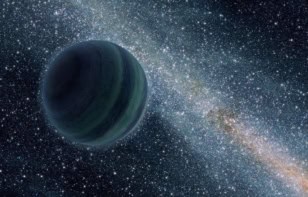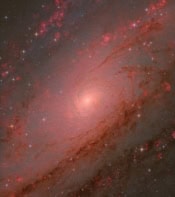
For particle physicists analysing the first data from CERN’s Large Hadron Collider (LHC) in Geneva, it is the €4.3 bn question: is there a particle known as the Higgs, which endows all others with mass? But now a study suggests that there might be a far cheaper method of finding the answer – and gargantuan particle accelerators don’t get a look-in.
According to Marco Taoso of CERN and colleagues, the famed Higgs could be leaving its imprint in the light produced in collisions of dark matter, the substance believed by most scientists to make up the vast majority of the universe’s mass. In fact, the researchers think we could be seeing the tell-tale spectral signatures of the Higgs in this way within a year – so sooner, potentially, than the LHC unscrambles data on the elusive particle.
Look to the skies instead
The LHC was built to search for a wealth of new physics but its foremost target has always been the Higgs. The only fundamental particle in the Standard Model yet to be discovered, the Higgs – or more precisely its associated field – is supposed to “stick” to other particles and thus give them the property of mass. Many particle physicists have been hoping that the LHC’s expected collision energies of 14 TeV will be powerful enough to finally unearth the Higgs, and in doing so wrap up the Standard Model.
However, Taoso’s group, which includes members in the US at Argonne National Laboratory, Northwestern University in Illinois and the University of California in Irvine, thinks experiments searching for traces of dark matter might get there first. Dark matter is thought to make up more than 80% of the matter in the universe but it does not interact with light (hence being “dark”) so its presence has only been inferred from its gravitational effects on normal matter.
Most models of the universe suggest that dark matter was more prevalent in the distant past, and this has led physicists to assume that dark-matter particles have been annihilating one another through collisions. Although dark matter itself doesn’t interact with light, such an annihilation could generate a photon and another particle, possibly the Higgs.
The researchers claim that detecting this Higgs would be a matter of spotting the partner photon with an energy reflecting the Higgs’s mass. If their calculations are correct, gamma-ray telescopes like Fermi might see the first evidence within a year.
Likely to trigger debate
“It is certainly possible to imagine that the Higgs could be produced in dark-matter annihilation,” says Andy Parker, an experimental high-energy physicist at Cambridge University. “In fact, there must be a whole range of hypothetical processes which would produce features like lines or shoulders in the gamma-ray spectrum, using Higgs or other particles to provide the fixed mass required for a spectral line,”
The idea, however, is likely to come under scrutiny from some members of the dark-matter research community. Taoso’s group has considered just one of several candidates for the dark-matter particle – the “heavy neutrino”. Other dark matter candidates would not annihilate in the right way to produce a Higgs.
For some, this issue makes the research a little too speculative. “While it is an interesting idea, I would be very surprised if the Higgs boson were actually seen in this way,” says David Miller, a theoretical physicist at the University of Glasgow.
Indeed, even if Fermi did find evidence for the Higgs, Taoso’s group admits that particle colliders would be required to “decisively” identify the particle associated with the spectral line. But with the LHC only just beginning to churn out high-energy data, particle physicists may be surprised to find that the first hints of the Higgs come not from below ground, but from far above.
A preprint of the research can be found on the arXiv preprint server.



